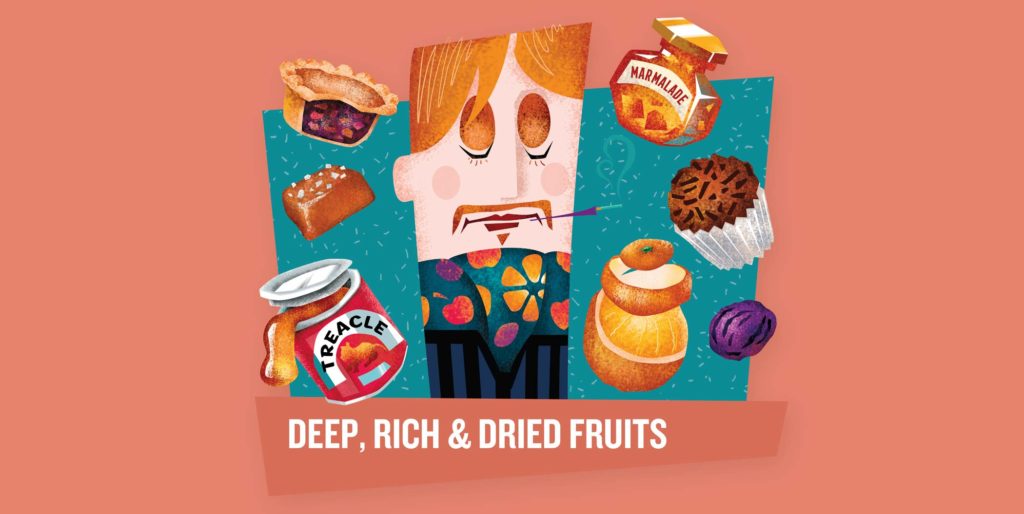Where flavour comes alive
Over the next 12 months, the Society’s Julien Willems is taking us on a deep and delicious dive into each of the Society’s 12 flavour profiles. What better place to start than the perfect dram to warm up a chilly winter day, with Deep, Rich & Dried Fruits
We all have different life experiences and perceive scents and flavours in different ways. More often than not, what we taste, or what we think we taste in whisky, is in fact a mosaic of overlapping compounds, stimulating our memories of a real, tangible ingredient, fruit or object that is not in the slightest way part of the whisky’s recipe.
With winter weather, shorter days and longer nights, we’re all looking for ways to treat ourselves to an opulent dram. When it comes to indulgence, there is one flavour profile that jumps out to many of us… You probably guessed it, this month we’re taking a peek at Deep, Rich & Dried Fruits.
Whisky maturation is in essence the quest for balance between the nature of a spirit and the influence of the cask.
For every profile, the balance point will be different and in the case of Deep, Rich & Dried Fruits whiskies, it often sits closer to the cask than to the still.
At first glance, “Deep” describes the depth of colour. As Dr Andy Forrester, the Society’s spirits educator, explains: “There is a direct correlation between colour and concentration of wood extractives, including tannins for instance, particularly in European oak. In truth, though, we don’t exactly know what processes create colours.”
It’s not all colour though. The flavours are just as mesmerising, rich and enticing. Although there is still a lot of mystery when it comes to the chemistry of cask maturation, certain processes are very much known and key to creating such an intense and decadent whisky, or any whisky. Chief among which, in this instance, is the heat treatment of the casks.
As Dr Andy explains: “Heat treatments such as toasting help break down lignin, a basic component of wood, into a multitude of compounds. Some of them are flavour active, others are barely or not at all perceptible.”
Tannins, which the wine buffs among us will also be familiar with, can result in a dry and powdery mouthfeel. Vanillin and guaiacol provide vanilla and smoky-spicy flavours (think smoky barbecue rather than medicinal TCP) respectively. Add in some lactones extracted from the oak and the result could be a chocolate-like taste, which is frequently associated with sherry cask-matured whiskies.
But don’t be fooled into thinking that this flavour profile is just about the sherry and wine casks. Many whiskies landing in Deep, Rich & Dried Fruits come from different types of casks such as re-charred hogsheads (think distillery 68), heavily toasted or charred casks, new oak (think distillery 35 for exceptional examples), and either European or American oak.
Individually, the type of oak, the previous liquid in the cask or the spirit are not enough to guarantee that a whisky will land in one flavour profile or another.
But what is certain is that a Deep, Rich & Dried Fruits whisky requires a very active cask and to obtain it, a good heat treatment is essential.
Ultimately creating a Deep, Rich & Dried Fruits whisky takes time, skill, and to be fair, a good old bit of luck. Combining distillates of a heavier style (think distilleries 36, 37, 44 or 76 among others) with more active casks, or finding the vessels that will suit a “lighter” type of distillate (distilleries 9, 28 or 46 for instance) takes a great deal of knowledge and a suitably varied selection of casks. Care needs to be taken around peated distillates too: finding an active enough cask to stir an even gently peated distillate into the Deep, Rich & Dried Fruits profile is far from easy. Finally, it takes a special kind of dedication to resist the urge of bottling these casks before they reach their prime, especially when they are outstanding from early on. But patience and time always tell.

